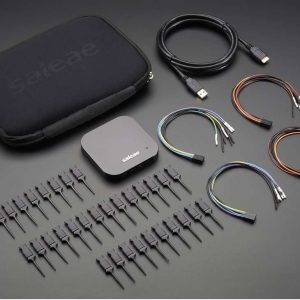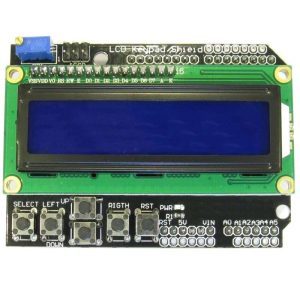The Network Shield provides a 10/100 Mbps Ethernet PHY to allow connection to an Ethernet network. It provides the connectors and load switch to support use of the USB 2.0 OTG controller to implement USB device, USB host or OTG operation. It also provides two CAN transceivers and connectors to allow connection to two independent CAN networks. Connectors are provided to allow connection to two of the I2C busses supported by the Max32.
In addition to the communications features, the Network Shield also adds a 256Kbit I2C EEPROM for non-volatile data storage and a 32.768Khz oscillator to allow use of the Real Time Clock/Calendar (RTCC) peripheral in the PIC32 microcontroller.
The Network Shield is designed to the same form factor as the Max32 board.
- Usable with the Max32™
- SMSC LAN8720 10/100 Ethernet PHY
- RJ45 connector with integral magnetics
- USB Device and Host Connectors
- Two MCP2551 CAN Transceivers
- Two 12-pin header connectors for CAN
- Two I2C daisy chain connectors
- 256Kbit I2C EEPROM
- 32.768 Khz Oscillator
Support Document
1. chipKIT Network Shield™ schematics. Download
2. chipKIT Network Shield™ reference manual. Download
3. This zip file contains libraries and documentation for using the Network Shield with the chipKIT MPIDE. The libraries provide Ethernet, USB Device, and CAN support. Download

{youtube} 24JnXJf4aoE?version=0 {/youtube}

1) USB Connectors
The connector on the top of the board is a standard USB A type receptacle. This is used
when the Max32/Network shield is used as a USB host. Immediately below this connector
is a USB Micro-AB connector. Tis connector is used when the Max32/Network Shield is
used as a USB device, or when using it as an On-The-Go (OTG) device.
2) Ethernet Connector with Integral Magnetics
This connector is used to connect the Max32/Network Shield to an Ethernet network..
3) JP4 – USB Host Connector Selection
When the Max32/Network Shield is used as a USB host, this jumper is used to select
which USB connector is being used.
4) J17 – Power Pass-through Connector
This connector passes the power connector from the Max32 through the Network Shield
board, and powers the Network Shield from the Max32.
5) J9 & J12 – Analog Signal Pass-Through Connectors
These connectors pass the analog input pins on the Max32 through the Network Shield
board.
6) CAN2 Connector
This connector provides access to the signals for CAN2.
7) CAN1 Connector
This connector provides access to the signals for CAN1.
8) Digital Signal Connector
This connector provides most of the signals used by the Ethernet and USB interfaces from
the Max32 board to the Network Shield board. The remaining signals are passed through
the Network Shield.
9) J7 – I2C #1 Daisy Chain Connector
This is a 2×4 pin header connector that provides access to the I2C signals SDA and SCL
as well as power from the 3.3V power bus and ground. This can be used to extend the I2C
bus off of the board and to power external I2C device. Digilent has cables and a selection
of I2C peripheral modules that can be accessed using this connector.
10) J7 – I2C #2 Daisy Chain Connector
This is a 2×4 pin header connector that provides access to the I2C signals SDA and SCL
as well as power from the 3.3V power bus and ground. This can be used to extend the I2C
bus off of the board and to power external I2C device. The jumpers for disabling the onboard
pull-ups are adjacent to this connector.
11) Digital Signal Connectors
Some of the signals used by the Network Shield are provided on these connectors. The
rest of the signals are passed through the Network Shield.




